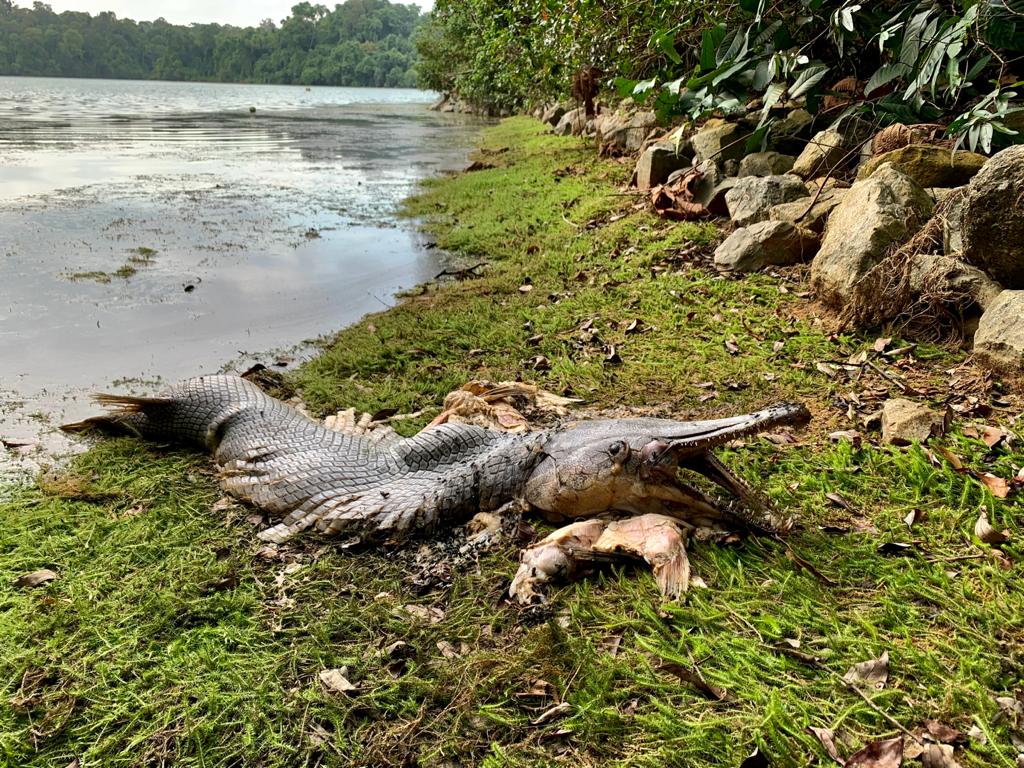If you were at MacRitchie Reservoir on Valentine’s Day, you might have been in for a very different surprise.
This was spotted by Facebook user Karen Lythgoe along the banks of MacRitchie Reservoir.

And it looks like something straight out of my nightmares.
Now, while it looks like the remains of an alligator, it’s since been established that it’s an alligator gar.
Not an Alligator
The alligator gar is not an alligator as the name might suggest, but it is actually a type of freshwater fish. Its fossil records date back 100 million years! It is therefore commonly also known as a “living fossil”.
In fact, the Alligator gar which is native to North America, is the largest freshwater fish and can grow up to 2.5m and can weigh around 160kg. The average height of a Singaporean is about 1.6-1.7m.
NParks and PUB believe that owners who could not cope with its size may have released the Alligator gar into MacRitchie Reservoir.
These Alligator gars can be found at your local fish shops. When sold, they’re typically 20cm, which is still relatively large.

However, they do require great quantities of food and its sheer size makes it hard to keep it as a pet within our homes.
Non-Native Species Pose a Danger
In a joint statement, the National Parks Board and PUB stated that “when such non-native animal populations grow, they compete for natural resources with native biodiversity”.
Another instance of non-native species would be the 140 motoro stingrays which were removed from the Lower Pierce Reservoir in January 2019.
The National Parks Board and PUB also added that they “would like to remind everyone that the release of animals into our water bodies will disrupt the delicate aquatic ecosystem of our waters and may also pose a risk to users of our water bodies”.
Particularly, the Alligator gar is capable of delivering a significant bite wound to fishermen or swimmers due to its large size and sharp teeth.
Although there aren’t any documentation of alligator gars attacking humans, I’m not taking any chances.
People who release animals into rivers and streams can be fined up to $3,000 under the Public Utilities Regulations.
Offenders caught releasing animals in parks and nature reserves face penalties of up to $50,000, while a maximum of $5,000 may be charged for those releasing wildlife.
Featured Image: Facebook (Karen Lythgoe)




